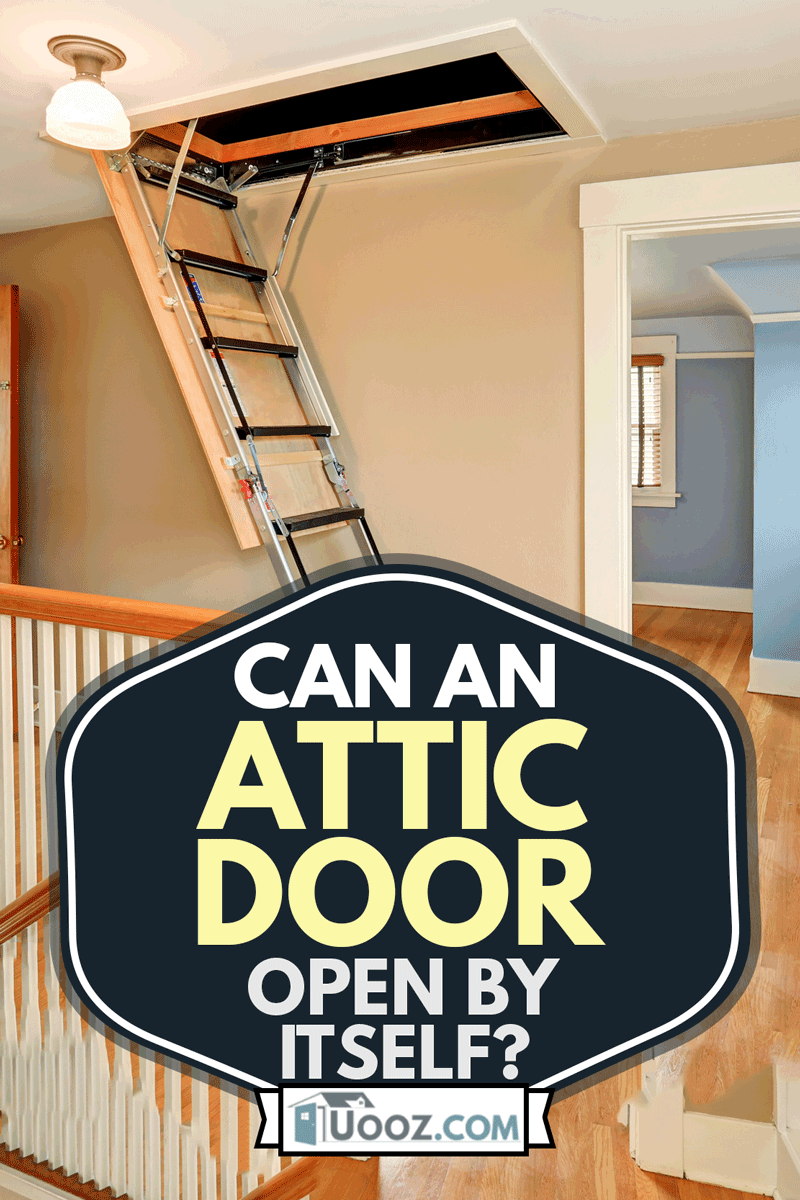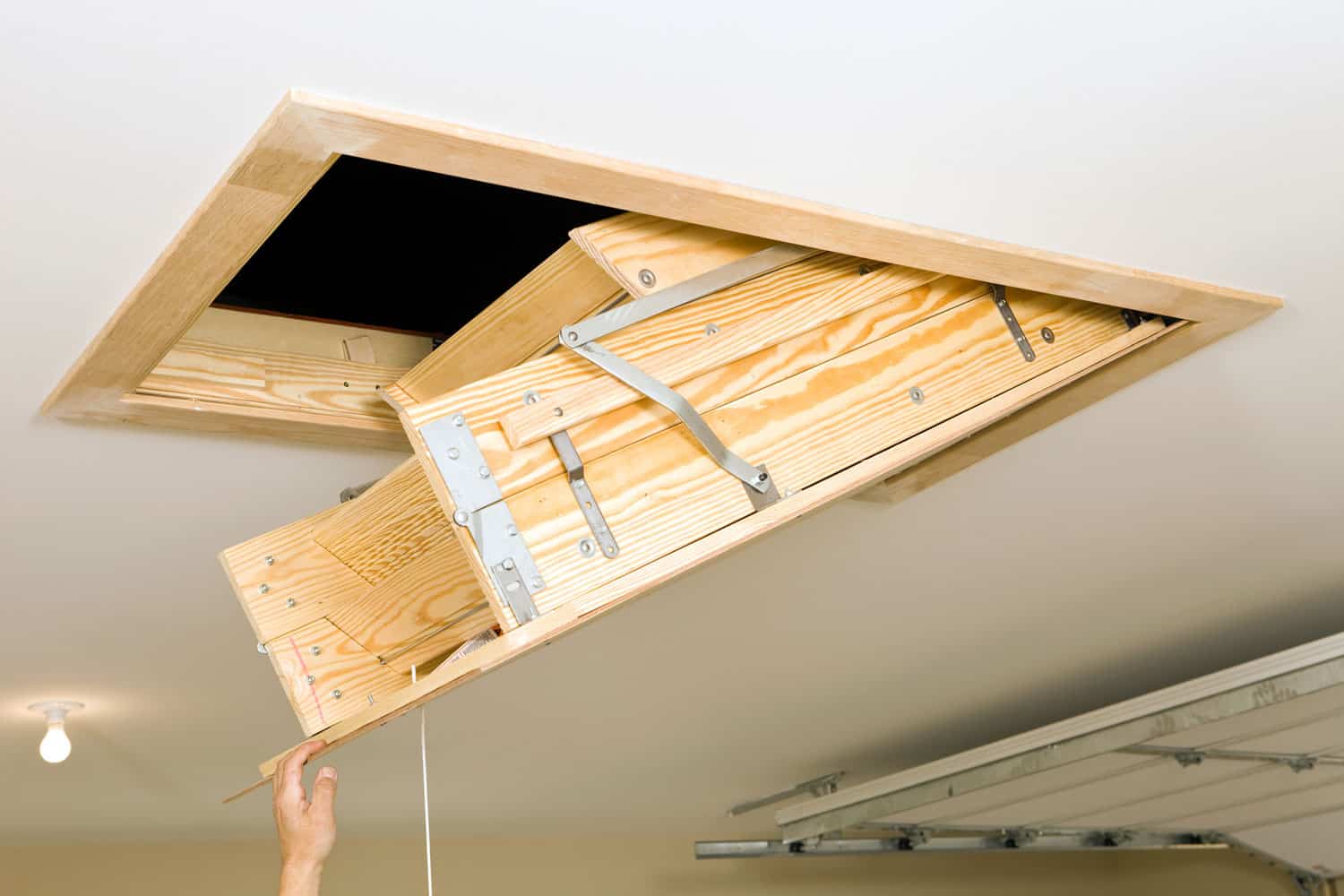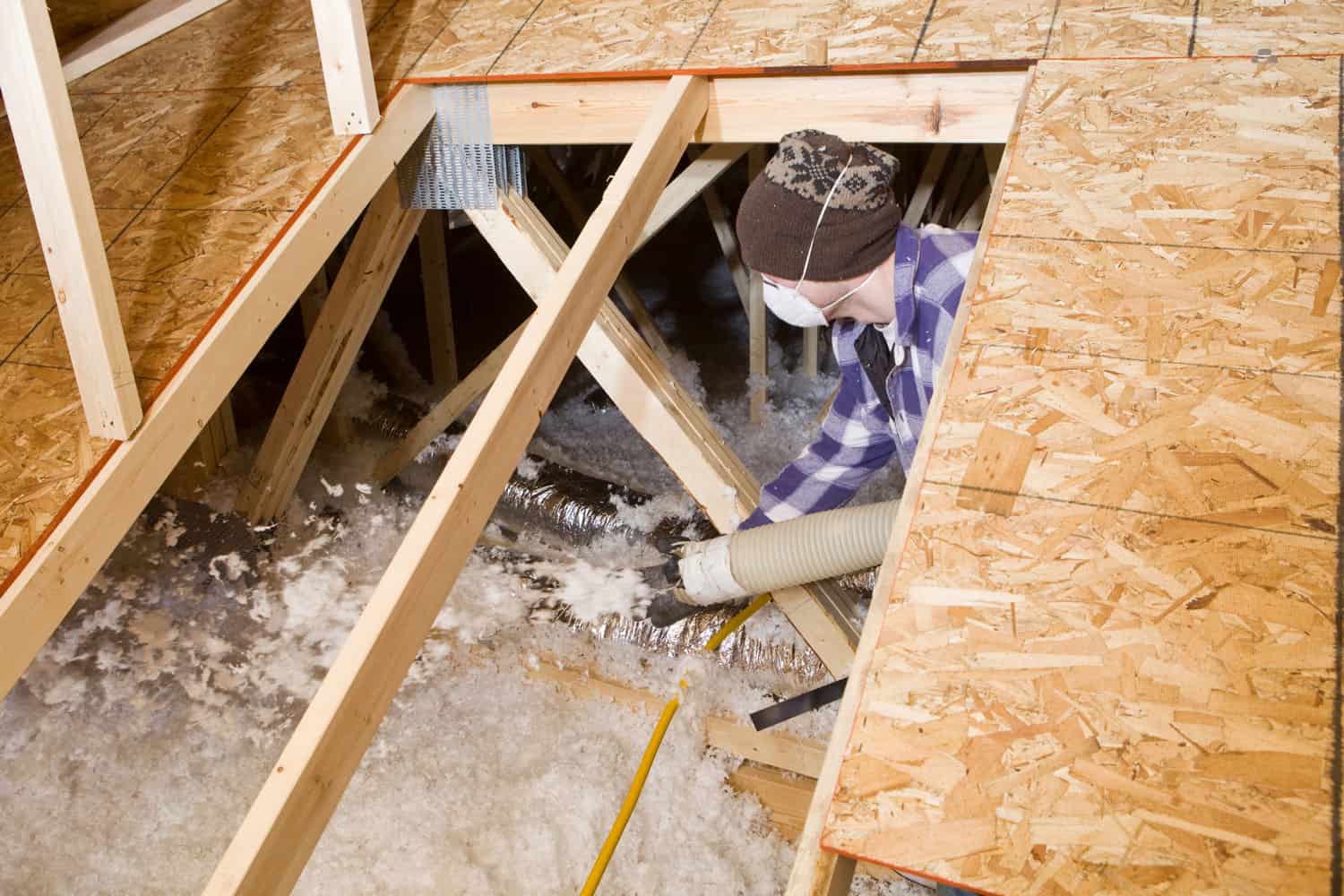If you've been noticing that your attic entrance has been open after you're sure you've shut it tightly, you probably are wondering why it's open. Don't worry; there aren't any ghosts hiding up there trying to tell you something. We've looked into the reasons why it is possible that your attic door could be open!
Overall, an attic door can open by itself. Like we said, your house isn't haunted. Temperature changes, wind, pressure, and weak or faulty parts can all cause your attic door to fall open.
While it may seem unnatural, there are plenty of things that will cause an attic door to open. Now that you know some reasons why your attic door could be open, you can figure out how to stop it from happening. We encourage you to keep reading through this post as we will discuss in-depth the causes of open attic doors, how to secure them properly, and some other common questions you might have.

Causes of an Open Attic Door
Temperature
For the most part, attic doors will be made of wood. Wood notoriously will shrink and expand with temperature changes. While the rest of the house may be heated or air-conditioned, the attic will always be closer to the outdoor temperature due to outer venting and the lack of these temperature controls in the attic. Wood panels that aren't properly sized for your entrance hole might shrink during cold weather to fall through the entrance or expand during warm weather and push themselves out of their slot.
Wind and Pressure
Wind and pressure go hand in hand when it comes to forces in your attic. The ridge of your roof has vents to allow air in and out of the home. On a really windy day, the rush of wind entering your attic can cause a vacuum of pressure, which can suck a panel door into your attic. In the same way, this can force open your attic door if you don't have a proper latch on it, keeping it secure.
Airflow through your home could also cause your door to open. If you've ever opened one door and had another close because of it, you understand the way pressure can move doors in your home. Open windows on opposing sides of the house can cause an airflow and pressure change that can suck open your attic door. Even rising heat from your HVAC system, drafting into your attic, can push open a panel door.
Faulty Parts
You might have an attic door that opens with its own set of stairs attached instead of a panel door. While these make it easier to get into the attic, they rely on hinges to stay closed. If the screw holding the hinge joint together is loose, it won't hold the door shut properly. Older model doors will have springs that pull the door shut, but lock when the door is fully open. Over time these can lose their strength and will no longer hold your attic door shut.
Many of the hinge doors don't come with a latch to hold them closed. When this latch is missing or broken, the door has little to hold it in place if any other parts fail. A broken latch on a panel door makes it easy to suck the panel out of place as well.

How to Secure Your Attic Entrance
Reduce Attic Airflow
There may be too much air flowing through your attic. Check for any damage to your roof that could be allowing extra airflow in and repair any damages. Of course, you might have too many openings, such as ridge vents, attic fans, or windows. Although, you may need to find an alternative solution to your attic door opening on its own if you live in an extremely windy region.
Replace or Add Parts
The most simple solution to an opening attic door is a latch. Whether you have a hinged door or a panel door, a latch will help secure it in place. You can use a chain lock like one could use on a front door, a combination lock, or a simple latch like on a gate.
Click here to see a slide latch lock on Amazon.
Check the hinges and springs on your hinge door. Over time these can wear out or become loose, making them less effective. New springs or a quick tightening of the hinge bolt could solve your problem. If it persists, you might want to consider replacing your entire attic door system.
What Is The Standard Attic Opening?
According to current building codes, a ceiling entrance to an attic should be no less than 22 inches by 30 inches and have unobstructed headroom upon entering the attic of at least 30 inches. Regardless of whether the entrance is located in a ceiling or wall, this is the minimum size for an attic entrance to meet building codes. While these measurements are minimums, hinged doors will definitely need a larger opening, and the building code shows no maximum size for attic entrances.
How Do I Stop My Attic Door From Drafting?
One of the best and easiest ways to stop your attic door from drafting is to install weather stripping. The insulation will keep air from sneaking through the cracks around your attic door and create friction to help hold it in place. Weatherstripping is a cheap and quick option to stop drafts. Weather stripping can be cut to size and is self-adhesive, making installation a breeze.
Click here to see this product on Amazon.
Attic door covers are another option for limiting drafts. These cover your attic door and help seal the edges around it. On top of this, an attic cover can help hold your attic door in place if it's opening on its own! DGSL makes an inexpensive attic cover that can help with energy efficiency, security, and drafts.
Click here to see the product on Amazon.
Keep in mind that drafts from the attic could be an indicator of a bigger problem for your home. You should check any windows and doors to make sure they are properly sealed. If necessary, you can recaulk these to help keep drafts to a minimum.
Are Attics Dangerous?

Attics can be dangerous. There is no floor other than ceiling beams in many attics, and stepping on your ceiling can cause you to fall through. You also must keep an eye out for exposed nails and wiring, as either of these can cause injury.
Health hazards in your attic can include animal droppings and insulation. These can mostly be avoided by wearing a proper mask if you must go into your attic for an extended period of time. When it comes to masks, you have plenty of affordable options available.
This mask from Kischer offers a great deal of protection from any airborne dust you might encounter in the attic while also including eye protection.
Click here to see this product on Amazon.
For a smaller mask that will also keep dust particles out of your lungs, you can check out one from Astro AI.
Click here to see this product on Amazon.
Finally, animals can be another hazard in your attic. Be aware that bees, hornets, bats, and mice can all make your attic their home. Call an exterminator or place traps if necessary. For information on how to fog your attic for bugs on your own, check out our article "Can You Fog Your Attic For Bugs? [Here’s How]."
How Can I Hide My Attic Access?
If your attic has a pull cord to open the door, it can draw attention. An easy way to hide this is to remove the pull cord and then install a handle. Remember to paint the handle the same color as your ceiling, and it won't draw nearly as much attention as a hanging cord.
You could try installing a recessed door to hide your attic entrance. These essentially blend into the wall or ceiling and create a flush finish. Alternatively, you can try to place some home decor over or around your door to hide its exact purpose.
Can An Attic Door Open By Itself?
Attic doors can definitely open by themselves. After reading through this article, you should have a good idea of the causes and solutions to this problem and some product suggestions to help you fix it. For more information about your attic and the options you have for it, check out our article "Is The Attic Considered A Story?"





